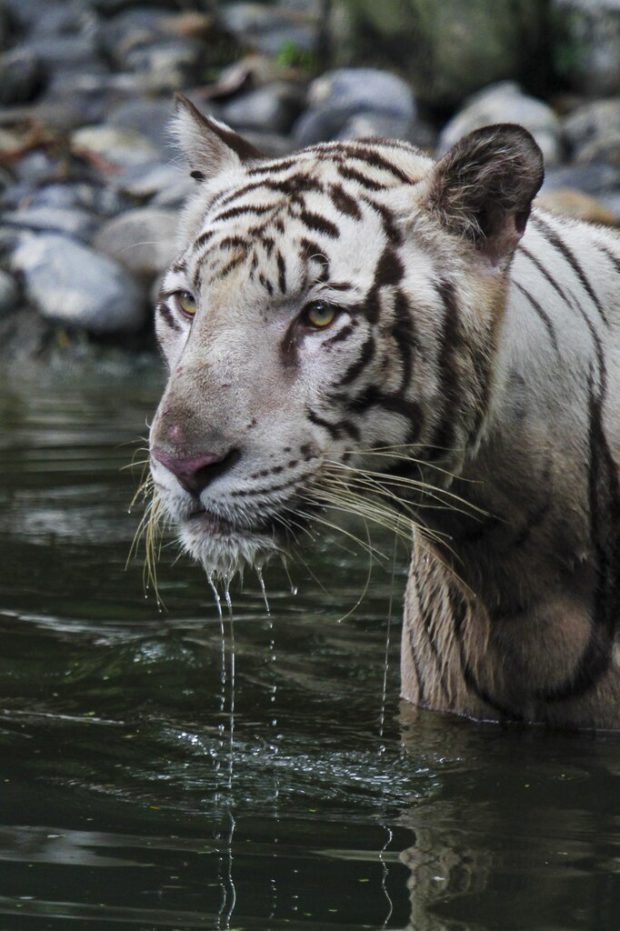
A white tiger stands in water inside its enclosure at the Alipore zoo in Kolkata, India, Monday, July 29, 2019. India’s tiger population has grown to nearly 3,000, making the country one of the safest habitats for the endangered animals.Prime Minister Narendra Modi released the tiger count for 2018 on Monday said it’s a “historic achievement” for India as the big cat’s population had dwindled to 1,400 about 14-15 years ago. (AP Photo/Bikas Das)
NEW DELHI, India —India’s tiger population has grown to nearly 3,000, making the country one of the safest habitats for the endangered animals.
Prime Minister Narendra Modi released the tiger count for 2018 on Monday, calling it a “historic achievement” for India after the big cat’s population had dwindled to 1,400 14-15 years ago.
India estimates its tiger population every four years. Environment Minister Prakash Javadekar said the tiger population was 2,226 in the last count, in 2014.
The tiger, India’s national animal, is categorized as endangered by law. India started a tiger conservation program in the 1970s that made it a crime to kill the animals.
“With around 3,000 tigers, India has emerged as of one of the biggest and safest habitats for them in the world,” Modi said.
Dev’t, environment
“Development and the environment are not mutually exclusive. India will progress economically and take the lead in protecting the environment, he also said in a tweet that hashtagged “International Tiger Day,” as observed on Monday by the World Wide Fund for Nature and other leading environmental groups.
Modi further pointed out the increase in the number of protected areas in the country from 692 in 2014 to 860 as of last year, as well as the number of community reserves to 100 from 43 in 2014.
Belinda Wright, founder of the Wildlife Protection Society of India, based in New Delhi, said India should be proud of its conservation achievement as the latest study was a more thorough estimation of the tiger population than done before.
“But we still have a long way to go to secure a long-term future for wild tigers,” she cautioned, adding that human-tiger conflict was one of the biggest conservation challenges.
Deadly conflict
The conflict between India’s human population and its wildlife, confined to ever-shrinking forests and grasslands, is deadly, with government data showing about one person killed every day by tigers or elephants.
India’s elephants and tigers are some of the most hunted animals in the country, sought for their ivory tusks or bones that are sold on the black market for use in unproven, traditional Chinese medicine. Elephants are also threatened by moving trains.
The government should avoid “huge linear intrusions, including highways, railways, electric power line and canals through protected areas as this leads to increased human-tiger conflict,” Wright said in part.